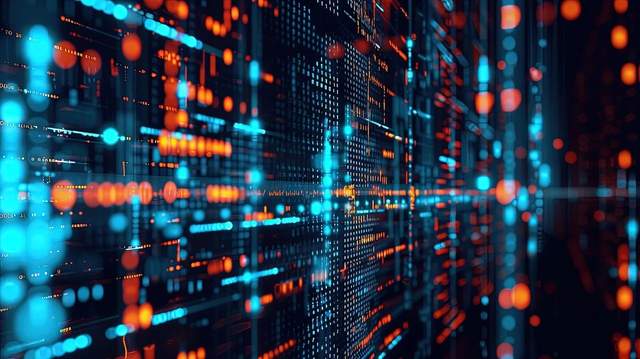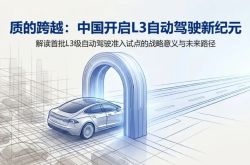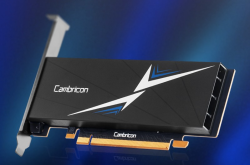Evolution of Domestic Large Models: Competition Shifts to the "Post-Brute-Force Computing Era"
![]() 02/27 2025
02/27 2025
![]() 627
627

The AI landscape is silently experiencing a profound transformation in technological prowess.
The ripple effects of DeepSeek have yet to subside, as the competition among large models transitions into the "post-brute-force computing era," emphasizing efficiency over sheer computational power. The AI power structure is also undergoing a realignment, with OpenAI's monopoly increasingly being challenged.
While newcomers are fiercely evolving, pioneers are pushing through obstacles. The ultimate winners in this dynamic environment remain undetermined. The key to success lies in leveraging open-source strategies to garner ecosystem support while utilizing closed-source models for commercial monetization.
01. Chinese AI Projects Boom Amid Policy Tailwinds
The development of domestic AI has been brewing steadily. 2023 is deemed by insiders as a pivotal year for the evolution of artificial intelligence.
AI scientist Li Feifei once stated, "Historically, 2023 is expected to be remembered for its profound technological changes and public awakening."
Prior to this, numerous technical explorations and innovations in artificial intelligence have taken place.
In 1956, John McCarthy first introduced the concept of "Artificial Intelligence" at the Dartmouth Conference, marking the official inception of AI as a discipline.
However, by 1973, AI research hit a bottleneck, leading to a significant reduction in funding and plunging the field into a "winter" period.
In 1986, Geoffrey Hinton, known as the "Godfather of AI," proposed the Backpropagation algorithm, revitalizing neural networks and ushering in a new dawn for AI development. Then, in 2017, Google introduced the Self-Attention mechanism, which replaced RNN/LSTM and became the core architecture of subsequent large language models (LLMs).
Looking back at the development of AI in China, 2023 is also considered the "first year of the domestic AI era."
According to Tianyancha, in the first half of 2023 alone, there were over 20 financing events directly related to large models, and the number of various large models released domestically exceeded 100. By July 2024, the number of registered and online generative AI large models approached 200.
To date, only a handful of companies have the opportunity to compete in the finals. Consulting firm Frost & Sullivan points out that the number of competitors in the field of general-purpose foundational large models has dwindled to just over 20, primarily dominated by internet companies, cloud computing giants, and AI startups.
This silent "war" has been witnessed by all. As we look back at the beginning of 2025, perhaps after the shakeout of the "Hundred Models War" in 2024, DeepSeek was able to strike like a "thunderbolt" in the global technology industry, propelling domestic AI to achieve a "critical leap" and gain a firm footing.
Companies with continuous innovation capabilities are gradually dominating the market, and the application scope of artificial intelligence is rapidly expanding, encompassing everything from image-to-video conversion to multi-language advertisement generation.
Meanwhile, large models and agent technologies have also entered a phase of accelerated development. Whether optimizing user experience on the consumer end (C-end) or providing enterprise solutions on the business end (B-end), agents and large models are redefining the manner in which technology interacts with society.
Currently, there are three main forces vying for the finals: first, internet giants and cloud service providers like Alibaba and ByteDance, which have ventured into large models; second, the national AI team represented by iFLYTEK, adopting a G/B/C linkage approach, providing both solutions and hardware products; third, AI startups such as Wisdom Spectrum and DeepSeek, with a few still adhering to foundational model innovation.
The upstream and downstream segments of the industry chain are experiencing differentiated scenarios, and the development paths of model vendors are diverging. Even the "Six Little Tigers of AI" are facing path differentiation. For instance, Baichuan Intelligence has shifted to large models for industries like healthcare; ZeroOneWanwu has entrusted the training of super large models to Alibaba; Dark Side of the Moon and MiniMax are focused on C-end applications and products.
Industry insiders generally believe that compared to upstream and downstream players in the industry chain, model vendors in the middle face profitability challenges. In 2025, the number of contestants in the large model finals that can still innovate at the foundational large model layer will further decrease.
02. From "Money-Burning Faith" to "Efficiency Revolution"
If "cost, AI Agent, multi-modality" are the three keywords of the current AI industry, representing the evolution direction of large models in 2024, then they may also signify the pivotal points for large models to take root in the industry.
First and foremost, cost is undeniably crucial for the survival of enterprises. The immense demand for computational resources to train and deploy large-scale AI models cannot be overlooked, imposing significant computational and operational costs on enterprises.
DeepSeek-R1 precisely addresses the pain points of enterprises regarding efficiency and cost control, achieving performance comparable to or even surpassing leading models with relatively lower computational power investment.
Traditional AI development models often rely on the logic of "scale supremacy," pursuing ultra-large models and ultra-large computing clusters. The lightweight model and open-source strategy of DeepSeek R1 lower the barrier to entry for AI applications, fostering the popularization of mid-range computing facilities and distributed data centers.
NVIDIA, an upstream player in the industry chain, is starting to feel the pressure from certain demand structural adjustments due to the emergence of DeepSeek.
ASIC chip vendors are embracing new development opportunities. Since ASIC chips can provide hardware acceleration for specific AI applications, they offer significant advantages in energy efficiency and cost control, making them more suitable for the trend of distributed computing power development.
For computing power service providers, regional data centers, with their low latency and proximity to application scenarios, are beginning to handle delay-sensitive application demands such as intelligent quality inspection in manufacturing and financial risk control.
Cloud computing giants like AWS and Alibaba Cloud are adjusting their construction strategies for some large data centers, increasing investment in edge computing and distributed computing power layouts.
The application side will benefit from the reduction in computing power costs, driving accelerated AI penetration in manufacturing, finance, healthcare, and other fields.
On the code hosting platform GitHub, a plethora of integrated application cases based on the DeepSeek model (awesome deepseek integration) have emerged, fostering a positive cycle of "demand driving supply" and realizing bidirectional empowerment of "computing power + industry."
AI technology will accelerate its penetration into various industries, becoming a vital engine for promoting industrial upgrading and economic development.
However, it's worth noting that while the technological breakthrough of DeepSeek R1 lowers the barrier to entry for AI applications, it may also trigger the "Jevons Paradox."
The Jevons Paradox was proposed by 19th-century economist William Stanley Jevons, who observed that as the efficiency of coal use increased, the total consumption of coal also rose. This paradox reveals a profound economic principle: efficiency improvements do not necessarily lead to a reduction in resource consumption; instead, they may stimulate demand growth due to lower costs and expanded application scopes, ultimately resulting in an increase in total resource consumption.
Microsoft CEO Satya Nadella cited the Jevons Paradox to elucidate the potential impact of DeepSeek R1, hitting the nail on the head.
Nadella believes that more affordable and accessible AI technology will spur demand through faster adoption and wider application. As the threshold for AI technology lowers, new application demands will arise in areas previously unable to afford AI due to cost constraints, such as small and medium-sized enterprises and edge computing scenarios, leading to an exponential increase in computing power invocation density.
The explosion of emerging application scenarios will also accelerate the fragmentation of computing power demand. Cutting-edge fields like intelligent driving and embodied robots have immense demands for real-time computing power, far outpacing the speed of DeepSeek technology optimization. Even if the efficiency of a single task is improved severalfold, the concurrent demand from millions of smart terminals will still create a vast computational power sinkhole.
03. Synergy Between "Open Source" and "Closed Source"
With the "explosion" of the open-source large model DeepSeek, keywords such as "open source" and "free" have become increasingly prevalent.
If before DeepSeek, domestic large model enterprises held varying views on the paths of "open source" and "closed source," now the calls for "open source," "open ecosystems," and expanding one's network seem to have become the norm.
Under the catalytic effect of DeepSeek, which acts like a catfish in the pond, domestic large model enterprises are exhibiting a more "open" attitude, aiming to accelerate the establishment of their own developer and application ecosystems.
The key distinctions between open-source and closed-source models can be observed from three dimensions: basic conditions, technical aspects, and commercialization.
From the perspective of basic conditions, open-source models utilize public datasets and community-contributed data as their data sources, supported by distributed GPU clusters owned by developers. This provides equal access opportunities for developers, researchers, enterprises, etc., fostering technological innovation and sharing.
Closed-source models, on the other hand, are developed by companies or teams, using proprietary data such as user behavior logs, private databases, and cleaned-up public data as their data sources. Users can only access these models through interfaces or platforms provided by the company.
From a profit scenario perspective, open-source models do not directly generate revenue but typically achieve profitability through additional services like cloud computing, technical support, training, and customized development. Companies can offer value-added services in a commercial manner, relying on open-source models to form a sustainable revenue stream.
The commercialization path for closed-source models is relatively direct, with companies achieving profitability through licensing, subscription services, platform fees, etc. Closed-source models can yield high profits for companies as customers need to pay for usage rights and services.
Open source and closed source are not mutually exclusive; they are likely to form an interplay in the future. Open source accelerates the popularization and innovation of AI technology, while closed source ensures that the technology can achieve long-term commercial development and maintain stability.
The future winners will be versatile players who can master both open-source and closed-source capabilities, leveraging open source to gain ecosystem momentum while also using closed source to capture value.
As Nadella noted, "There will be no winner-takes-all scenario in super-large-scale AI, and the open-source model will balance closed source."
Epilogue
DeepSeek will play a pivotal role in the current AI era, much like Android did in the mobile internet revolution.
It will restructure the industrial ecosystem, trigger a chain reaction, and accelerate the development of upper-layer applications and the unification of lower-layer systems. This will mobilize ecological forces across software, hardware, and upstream and downstream players, prompting all parties to increase investment in "model-chip-system" collaborative optimization and vertical integration, further weakening the CUDA ecological advantage and creating opportunities for the growth of the domestic AI industry.
Through technological innovation, DeepSeek has reduced dependence on high-end imported chips during the AI model training process, showcasing a viable technological path for domestic enterprises and significantly boosting their confidence in independently developing computing power chips.
The game is not merely about the technological choice between open source and closed source but also encompasses the competition for discourse power, market dominance, and computing power allocation in AI development. And this battle for AI supremacy has already commenced.






